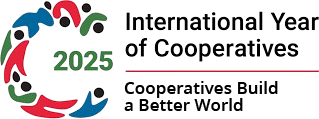Updated Status of Programme
1. Introduction:
The programme was launched in March, 2009 as part of the Central Government’s commitment to make secondary education of good quality available, accessible and affordable to all young persons. The objective of the scheme is to universalize secondary education by enhancing access and to improve quality of education at secondary stage, while ensuring equity. The scheme envisages increasing the number of children enrolled for classes IX-X within 5 years by providing a secondary school within a reasonable distance of every habitation, improving quality of education imparted at secondary level through making all secondary schools conform to prescribed norms, removal of gender, socio-economic and disability barriers. One of the 12th Plan Goals for the Secondary Education sector is to achieve near-universal enrollment in secondary education, with the GER exceeding 90 per cent by the 2017.
2. Achievements under the scheme:
10513 new secondary schools have been approved under the Scheme, out of which, 9239 new secondary schools have been made functional. Strengthening of 35539 existing schools have been approved under RMSA scheme in which 24581 new science lab, 30761 art/craft/culture rooms, 19510 toilet blocks, 12275 drinking water facilities and 2130 residential quarters have been approved. Out of these 7315 science labs, 5324 computer rooms, 7406 libraries, 7959 art/craft/culture rooms, 5975 toilet blocks, 4255 drinking water facility and 441 residential quarters have been completed. 51750 additional classrooms have been approved, out of which 14644 have been completed and 12562 are in progress. With regard to teachers, 107480 teachers (including 41507 additional teachers) have been sanctioned for secondary schools. Out of which 59353 teachers have been appointed.
The financial and technical assistance from Development Partners including World Bank, DFID and European Union have been ensured.
3. Expenditure under the scheme in 2013-14 and allocation for 2014-15:
An amount of Rs. 3,123 Crore was approved for the scheme at RE Stage out of which an amount of Rs. 3045.87 Crore has been released during 2013-14. The year wise budget allocation and releases under the scheme since 2009-10 is as under:
| Year | Budget Allocation (Rs. in crore) | Releases (Rs. in crore) |
| 2009-10 | 550.00 | 549.13 |
| 2010-11 | 1500.00 | 1481.95 |
| 2011-12 | 2512.45 | 2499.81 |
| 2012-13 | 3172.63 | 3171.62 |
| 2013-14 | 3123.00* | 3045.87 |
| 2014-15 | 5000 | 1270* ( as of 31st July 2014) |
* Final allocation (FG)
The allocation for 2014-15 for the composite scheme of RMSA is Rs.5000 crore.
4. Aspects of the inclusion:
The educational development of children belonging to educationally backward groups including SCs/STs/minorities is a priority under RMSA. The framework of the RMSA provides for various measures including intensive micro planning to provide flexibility to develop context specific interventions, reduction of educational in-equalities by giving priority to SC/ST/Minoirty/ educationally backward areas and population sectors, regular enrolment drives, special camp and bridges courses, open and distance learning, providing hostel facilities, monitoring attendance in pockets identified for intensive activities, special coaching classes/remedial classes especially for educationally minority girls and children who are not doing academically well, teacher sensitization programme, etc. for ensuring access to these groups. The scheme also recognizes the need for extending specific interventions and resource support, including providing textbook, workbook, stationery, uniform, footwear, bicycles, boarding and lodging for each child and stipend for day scholars, to the children belonging to SCs/STs including differently abled children and secondary and higher secondary stage.
5. Step taken for improvement of quality of education:
With a view to enhance quality of secondary education in the Government secondary schools, the scheme provides for Additional Teachers to improve PTR, Teachers, Headmasters and staff for new secondary school, In-service training for principals, teachers (since State Governments support grant in aid schools mostly for salary of the teachers, in-service training of teachers is provided under RMSA for Grant in aid schools for their capacity building), Leadership and Professional development programme of headmasters, Excursion trip for Teachers, Providing of Math Lab kits, Science Lab kits, Excursion trip for students of classes IX or X, Remedial teaching (bridge courses), enhancement of learning achievement for poor students, Providing lab assistant and clerk. 105722 teachers (include 41507 additional teachers) have been sanctioned for secondary schools, out of which 46120 teachers have been appointed.
6. New initiatives during the current year:
(i) Various other schemes of secondary education viz. Girls’ Hostel, Vocational Education, IEDSS and ICT at school have been merged with the umbrella RMSA scheme for better efficiency and coordination and to ensure effective utilization of financial resources.
(ii) The PAB of the States have been organized early to ensure that there is no procedural delay in release of funds.
(iii) A process of release of adhoc grant upto 25% of the expenditure on recurring grant of the previous year of the State / UT has been adopted to ensure that recurring activities of the States/UTs are not hampered due to non-availability of funds.







